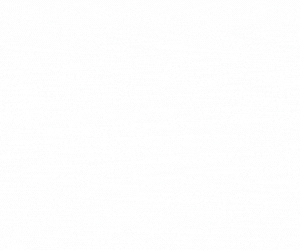-
 Home
Home
-
 News
News
Latest Educational News Stories
Daily update of all national, international news, picture stories, college / university announcements and educational events.
-
 Colleges
Colleges
Pakistan's Largest Database of Colleges and Universities
Explore Largest Directory of Private and Govt. Colleges, Universities and find best institute for your future Education.
-
 Courses
Courses
-
 Admission
Admission
-
 Lectures
Lectures
-
 Online Test
Online Test
Short Question
- 9th Class Physics Short Questions
- 9th Class Chemistry Short Questions
- 9th Class Math Short Questions
- 9th Class Biology Short Questions
- 9th Class Computer Short Questions
- 9th Class English Short Questions
- 10th Class Physics Short Question
- 10th Class Chemistry Short Question
- 10th Class Math Short Question
- 10th Class Biology Short Question
- 10th Class Computer Short Question
- 10th Class English Short Question
-
 Past Papers
Past Papers
-
 Date Sheets
Date Sheets
-
 Results
Results
Exam Results 2024
Check online Results 2024 Matric Inter BA BSc B.Com MA MSc M.Com CSS PCS MCAT ECAT of all educational boards and universities in Pakistan
-
 Study Abroad
Study Abroad
Study Abroad Programs and Opportunities for Pakistani Students
Explore free study abroad search to find programs, consultants, events to study in USA, UK, Australia, China, Malaysia and many others.
-
 Jobs
Jobs
-
 Tutors
Tutors
-
 More
More
-
 Apps
Apps
Chemistry Fsc Part 1 Online Test
| Sr. # | Questions | Answers Choice |
|---|---|---|
| 1 | Which type of hybridization of C occurs in CO2 |
<p>SP</p> <p>sp2</p> <p>sp3</p> <p>dsp2</p> |
| 2 | Sp3 Hybridiztion ins associated wiht structure. |
<p>Linear</p> <p>Tretrahedral</p> <p>Trigonal</p> <p>Octahedra</p> |
| 3 | What is molecular geopetry of SO4 -2 ion. |
<p>Tetrahedra</p> <p>Trigonal Planar</p> <p>Trigonal pyramidal</p> <p>Linear</p> |
| 4 | Thnumebr of lone pair of electonrsein ammonium ion is |
<p>One</p> <p>Two</p> <p>Three</p> <p>Zero</p> |
| 5 | The molecule with linear structure is |
<p>H2O</p> <p>CO2</p> <p>H2S</p> <p>BF3</p> |
| 6 | Dipole moment of CO2 is |
<p>1.8 D</p> <p>1.94 D</p> <p>1.0 D</p> <p>Zero</p> |
| 7 | Dipole moment is the product of. |
<p>Charge x displacement</p> <p>Charge x distance</p> <p>Newton x displacement</p> <p>Charge x mass</p> |
| 8 | Which will have zero dipole moment |
<p>H2O</p> <p>BF3</p> <p>H2S</p> <p>CHCl3</p> |
| 9 | The molecuel with greatest dipole moment is. |
<p>H2O</p> <p>H2S</p> <p>NH3</p> <p>HF</p> |
| 10 | The expected bond energy of HCl is lesser than the actual, this is because. |
<p>Size of hydrogen is very small</p> <p>HCl is non polar compund</p> <p>HCl is a polar comoound</p> <p>There exists hydrogen bonding</p> |
| 11 | The actual bond length in a polar covalent compund is. |
<p>Lesser thanexpected</p> <p>Greeater ahtn expected</p> <p>Equal to the expected</p> <p>Exactly half of expected</p> |
| 12 | The bond formation energy of a compund is. |
<p>Equal to bond idssociation energy</p> <p>Less thanbond idssociation energy</p> <p>Greater than bond dissociaton energy</p> <p>Inverselyproportional to bond dissociation energy</p> |
| 13 | The bond distance betwen H-H is |
<p>74.5 pm</p> <p>436.45 pm</p> <p>133 pm</p> <p>154 pm</p> |
| 14 | Tendency of an atom to attract the shared pair of electrons is called. |
<p>Electronegativity</p> <p>Ionization energy</p> <p>Electron Affinity</p> <p>Electrpositivity</p> |
| 15 | If the electronegativity differene between bonded atoms is more than 0.5 but less than 1.7, the bond will be. |
<p>Ionic</p> <p>Polar Covalent</p> <p>Non polar covalent</p> <p>Coordinate covalent</p> |
| 16 | Covalent bonds are |
<p>Right and directional</p> <p>Non rigid and directional</p> <p>Rigid and non directional</p> <p>Non rigid and non directional</p> |
| 17 | Octet rule is not obeyed b which of the following compounds during its formation |
<p>H2O</p> <p>NaCl</p> <p>NH3</p> <p>PF5</p> |











